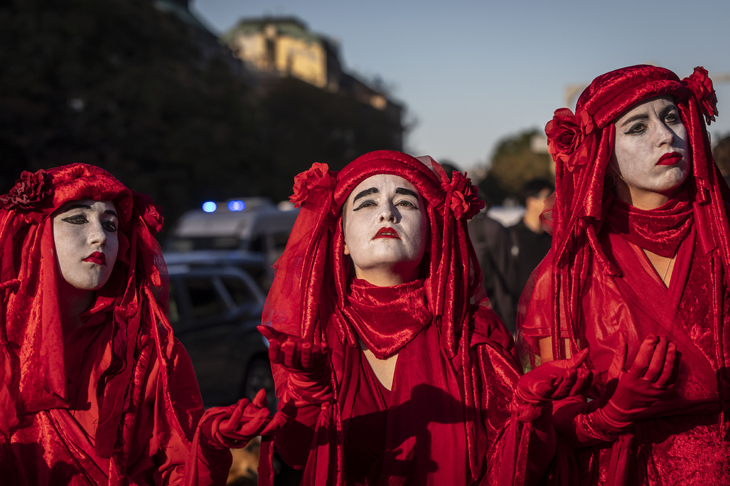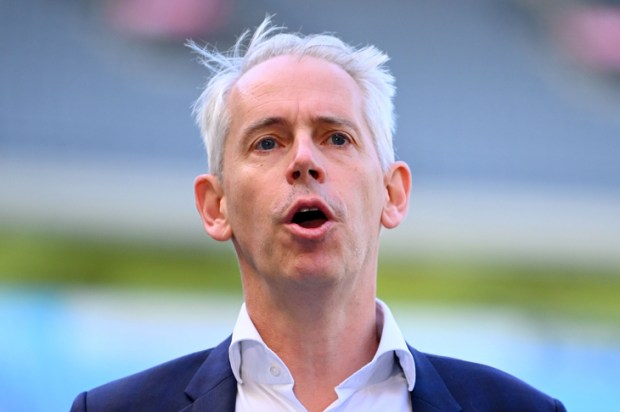What do the years 700, 800, 900, 1000, 1100, 1200, 1300 and 1400 AD have in common, asks British Professor, Richard Holdaway.
Apart from there being no cars, planes or electric power, he answers, all were hotter than 2017, 2018, 2019, or indeed, any of the last 600 years.
But Professor Holdaway is not the sort of authority on climate change which the elites in the media, politics, universities and other institutions wish to hear. He doesn’t fall into one of their approved categories of climate commentators.
He is not, for example, an angry and sadly manipulated schoolchild, nor is he on the Nobel Peace Prize shortlist. He can’t see CO2 disregarding of course what passes for that in the vapour over power stations in stock films shown when TV networks broadcast a climate news report.
Nor does he occupy the streets with Extinction Rebellion, who receive special treatment because the Queensland authorities must think they share none of the culpability of, say, offenders like the Queensland farmer who fed his starving cattle with his own mulga and was consequently fined $112,000.
Nor is the professor a celebrity with a mansion which glows from using more electricity than a small town, nor does he fly the world in his private jet to lecture on the importance of not using fossil fuels.
Neither is he a politician, with a ‘carbon’ footprint many times that of his constituents, nor a journalist always ready to present the virtuous side of the climate debate.
To climate believers, Professsor Holdaway has no standing. Forget that he was a director for 17 years of the prestigious UK-based RAL Space with 250 of the world’s best space scientists and engineers reporting to him, including one of Europe’s largest climate change research groups.
If he were to be invited to lecture in Australia, as he should be, the organisers would no doubt have to pay for police protection and he would be banned, as a denier, from the university online publication, The Conversation.
But he does not deny climate change. Climate change denial was, after all, only declared verboten when the climate change high priests were forced to change the name of their theology from global warming to climate change because of the extremely inconvenient fact that, despite all projections and manipulations, global warming had stopped dead in its tracks.
So a new rule had to be adopted that anyone not agreeing that man-made CO2 would soon lead to an apocalyptic disaster was to be declared a ‘climate change denier’. This is yet another example of Orwellian Newspeak where to limit thought to the politically correct, sex is replaced by ‘gender’, multiracial by ‘multicultural’ and CO2 by ‘carbon’.
Despite his not denying climate change he is, to the devout warmist, no better because he is a denier of a man-made CO2 climate apocalypse. He has demonstrated this by unintentionally undermining such important bodies as Australian local government councils who’ve declared a ‘climate emergency’.
He points out that the current period where no change is occurring in the average global temperature obviously still means that the temperature will be higher and lower in some places.
Unsurprisingly, the mainstream media must have feared that if the rank-and-file were to realise this, they might worry less. So as Professor Holdaway reveals, they decided that when NASA released a map of the world showing the average temperatures in the week 13 to 17 June 2019, they would publish this showing only those parts warming and editing out those parts cooling.
And even where increasing temperatures are recorded, he argues that the Beijing experience, a worldwide phenomenon, indicates this may not be the result of global warming. In the last decade that city has quadrupled in size, with increased use of concrete reducing evaporation and wind speeds. The result has been that temperatures have increased 5 to 7 degrees and not because of global warming.
And as for the science being settled, as Senator Penny Wong famously declared, Professor Holdaway says that about 40 per cent of climate scientists today believe that man-made CO2 will not have a significantly deleterious effect.
But, he says, only about 1 per cent of what is in the mainstream media about climate change reports their views.
A leading example coincided with the recent UN climate summit, which may well hold the world record for its CO2 footprint. This was when 500 leading scientists wrote to the UN denying there was any climate emergency.
But apart from in the Epoch Times, including the Australian edition, it was not published, at least in any commensurate way that I can find, in the mainstream media. Instead, media outlets were filled with almost endless stories about the visitation by Greta Thunberg.
Incidentally, in declaring the planet is at the beginning of a ‘mass extinction’,’ she appropriated the theme ‘How dare you!’ as used so effectively in the late Senator Neville Bonner’s landmark speech to the 1999 Australian Constitutional Convention .
Slamming the IPCC models as ‘immature’, the 500 pointed out their predictions turned out to be four times — four times! — higher than the warming actually observed. Why? Because as the 500 explain, the climate is a ‘coupled non-linear chaotic system’ and thus not at all susceptible to such computer modelling.
It is, they say, ‘cruel as well as imprudent’ to advocate the squandering of trillions of dollars on the basis of ‘results’ from such immature models. These are real scientists talking, not celebrities, politicians and not propagandised school children.
But it is on the basis of this sheer and unadulterated quackery that Australia’s politicians, yesterday and today, have rushed to append their signatures on behalf of Australians alive today and those yet to be born on what Alan Jones and Terry McCrann long ago warned was a national suicide note.
Got something to add? Join the discussion and comment below.
Get 10 issues for just $10
Subscribe to The Spectator Australia today for the next 10 magazine issues, plus full online access, for just $10.
You might disagree with half of it, but you’ll enjoy reading all of it. Try your first month for free, then just $2 a week for the remainder of your first year.














Comments
Don't miss out
Join the conversation with other Spectator Australia readers. Subscribe to leave a comment.
SUBSCRIBEAlready a subscriber? Log in